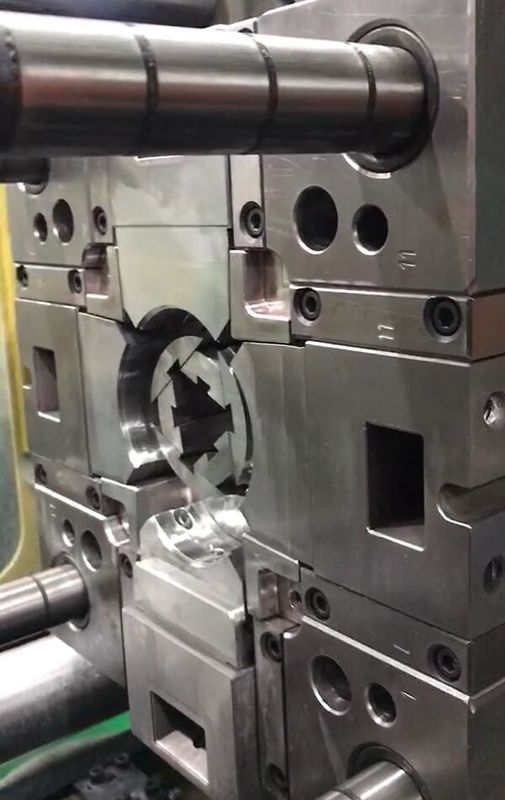Speedy Solutions: Unlocking the Secrets of Rapid Injection Molding
In today’s fast-paced manufacturing landscape, the demand for quick turnaround times and high-quality products is more critical than ever. Rapid injection molding has emerged as a game-changing solution for companies looking to streamline their production processes while maintaining exceptional standards. This innovative technique allows businesses to produce complex parts and prototypes in a fraction of the time it traditionally takes, making it an invaluable asset in industries ranging from automotive to consumer goods.
Understanding the intricacies of rapid injection molding can unlock numerous benefits for manufacturers. By harnessing advanced technologies and techniques, companies can reduce lead times, minimize costs, and enhance flexibility in their production lines. As we delve deeper into the principles of rapid injection molding, we will explore how this method not only accelerates manufacturing but also contributes to more efficient design iterations and faster market entry. Join us as we uncover the secrets that make rapid injection molding a pivotal force in modern manufacturing.
Benefits of Rapid Injection Molding
Rapid injection molding offers several advantages that make it an attractive option for manufacturers. Firstly, it significantly shortens the production cycle compared to traditional methods. By using advanced technologies and techniques, rapid injection molding can produce high-quality prototypes and parts in a fraction of the time, allowing companies to quickly bring their products to market. This expedited process is particularly beneficial for industries that require swift responsiveness to market demands.
Another key benefit of rapid injection molding is the cost-effectiveness it brings to production. With the ability to quickly iterate designs and create molds, companies can minimize waste and reduce the financial burden associated with longer production timelines. The efficiency of this method also allows manufacturers to efficiently produce small to medium-sized runs without the need for expensive tooling, making it easier for startups and smaller companies to enter the market with innovative products.
Lastly, rapid injection molding supports design flexibility, making it easier for engineers and designers to experiment with new ideas. The capability to rapidly prototype and test different designs allows for optimization before full-scale production begins. This flexibility not only enhances the overall quality of the final product but also fosters innovation, as teams can explore variations that might have been cost-prohibitive with conventional molding methods.
Key Techniques and Innovations
Rapid injection molding is revolutionizing the manufacturing landscape by introducing several techniques that enhance efficiency and speed. One of the most significant innovations is the use of advanced materials. These materials have been engineered to withstand higher temperatures and pressures, allowing for faster cycle times and improved performance. As a result, manufacturers can produce high-quality parts in a fraction of the time traditionally required, leading to significant cost savings and increased productivity.
Another critical advancement is the integration of digital technologies into the molding process. Computer-aided design (CAD) and computer-aided manufacturing (CAM) systems streamline the design and production phases, enabling rapid prototyping and iteration. This digital approach allows for real-time adjustments and optimizations, minimizing waste and ensuring that the final products meet the exact specifications. The combination of digital tools with rapid injection molding has redefined how quickly and efficiently manufacturers can respond to market demands.
Moreover, the implementation of automation and robotics in rapid injection molding further enhances productivity. Automation reduces the reliance on manual labor, which not only speeds up production but also minimizes human error. Robotic systems can handle various tasks, from feeding materials to quality inspection, ensuring consistent output and reducing cycle times. These innovations work synergistically, making rapid injection molding a pivotal method for companies looking to stay competitive in today's fast-paced market.
Applications in Various Industries
Rapid injection molding has gained traction across numerous industries due to its efficiency and ability to produce high-quality parts in a short amount of time. In the automotive sector, manufacturers utilize this technology to create complex components such as dashboards, housings, and other intricate parts. The ability to quickly iterate designs and produce prototypes allows for faster product development and reduced time to market, making it an invaluable tool in a highly competitive field.

The medical industry also benefits significantly from rapid injection molding. This technology enables the production of precise and sterile components that meet stringent regulatory requirements. Devices such as syringes, diagnostic tools, and surgical instruments can be manufactured quickly, ensuring that medical professionals have access to the latest innovations without lengthy delays. The capacity for customization further enhances its appeal in creating patient-specific solutions.
In consumer electronics, rapid injection molding plays a vital role in the production of enclosures, buttons, and other parts. As product life cycles shorten and consumer demands increase, companies rely on this method to deliver stylish and functional designs rapidly. The flexibility offered by rapid injection molding allows for efficient adjustments and iterations, ensuring that manufacturers can keep pace with rapid technological advancements and changing consumer preferences.